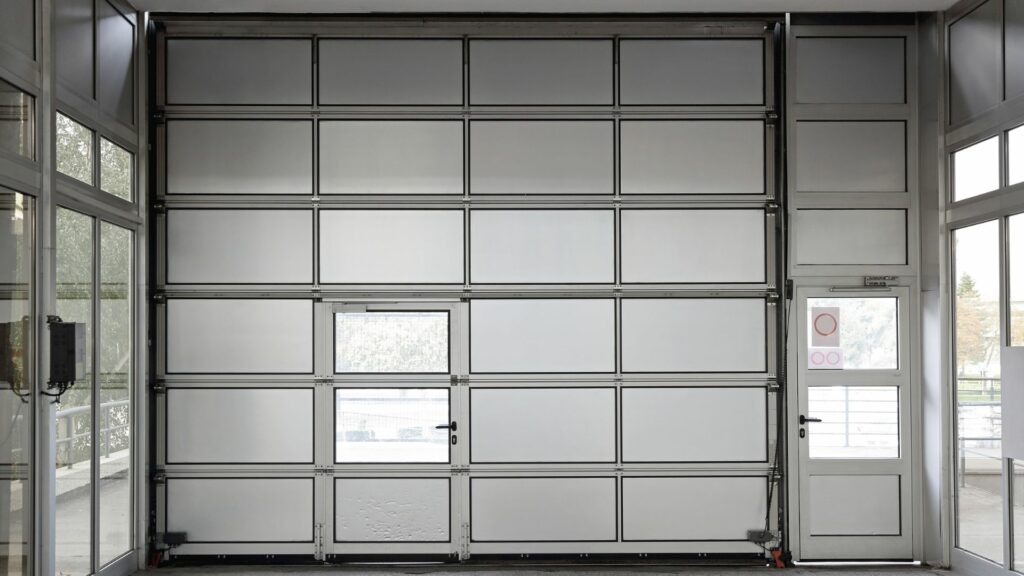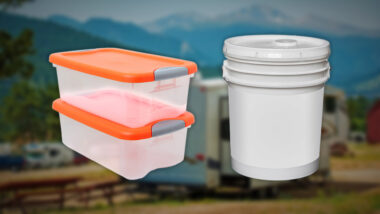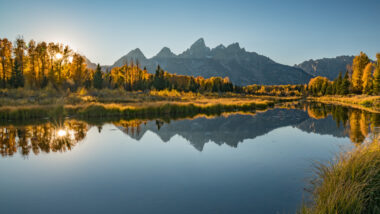Table of Contents Show
Storing your RV inside a garage is an important step in keeping it looking and functioning well for years to come. Unfortunately, it won’t fit into a standard-size garage door unless you have a pretty small camper.
If you have a larger RV, like a fifth wheel or motorhome, you’ll need a garage that can hold something of that size. Thankfully, there are many RV garage door sizes to fit every need.
Today, we’ll talk about finding the right RV garage door for your situation. Let’s take a look at your options and what you should consider as you research.
RV Garage Doors: What You Need to Consider
When considering garage storage for your RV, your first thought will likely be getting a garage large enough to store it.
But don’t forget about how you’ll get the RV inside the structure. You’ll need a garage door wide enough and tall enough to admit the RV.
There are a few other things you’ll want to consider when choosing your new RV garage door; let’s take a look.

What Kind of RV Are You Storing?
If you’re storing a small teardrop trailer, your RV garage door sizing needs will significantly differ from those with a large 45ft class A motorhome.
A standard home garage size might fit a pop-up trailer or a teardrop, while you might need massive doors like those used for farm equipment for a fifth wheel or motorhome.
When planning your garage and door size, think about the near future as well. If you think you might upgrade your RV in the future, consider choosing a door today that will fit your needs later on.
Do You Need Extra Room to Maneuver?
Those long experienced in both towing and backing up might handle a tight squeeze with finesse, but not everyone has that talent (nor is it always worth the risk).
If you need more wiggle room to park your RV indoors, keep that in mind when choosing a door size.
Remember that you need an appropriate buffer on each side. It’s also important to consider the angle at which you enter the garage.
For example, if your driveway isn’t as wide as your door, you might have to enter at an angle. Factor in buffer space for that as well.

Pro Tip: Before purchasing your RV, read our First Time RV Buyer’s Guide to learn what to consider in addition to your storage space.
Will You Need a Custom Garage Door?
If your RV is of an odd size, you might need to custom-order a door. There are many premade standard sizes for garages, but cookie-cutter sizes won’t always do the job.
Take measurements and compare them to doors that are currently available. You might discover that you need a custom model. T
ake precise measurements and contact a trusted manufacturer to build it.
What Is the Standard RV Garage Door Size?
Standard RV doors are 12-14ft wide and 12-16ft tall. The minimum height and width would be 12ft x 12ft.
The size is the best way to differentiate between an RV garage door and a standard garage door.
A standard garage door is about 8ft high–much too low for most RVs.
A single car garage would also be a minimum of 7ft wide, which is far too small for most trailers.

How to Measure for Your RV Garage Door
When choosing an RV garage door size, keep clearance in mind. You’ll need at least 2 feet of clearance from the top of your RV garage door and the top of your garage.
So if you have a 16-foot tall garage, the maximum height that your RV garage door can be is 14 feet.
Don’t trust generic specs for your RV. Your RV’s height could be different than even your manufacturer’s website.
Many things go into the dimensions of an RV, including additional AC units and how it hitches to a tow vehicle (if applicable).
So always manually measure your rig, including anything on the roof like an AC unit. If measuring a tow-behind, don’t forget to measure the hitch!
Let’s recap the most crucial point: If you measure your RV at 12ft tall and 8ft wide, you cannot get a door of the same size. You need an appropriate buffer to prevent damage to your RV or garage.
What Kinds of Doors Work Best for RV Garages?
You may think that all garage doors work the same, but that isn’t the case.
There are six main garage doors types: sectional, roll-up, slide, side-hinged, tilt-up canopy, and tilt-up retractable.
The type you choose will likely depend on where you live, your preferred style, and what works best for your garage’s construction.

Will You Need to Build a Custom Garage for Your RV?
You likely won’t need to build a custom RV garage if you have a small camper such as a teardrop or popup, which will often fit in standard garages. If you have an RV longer than a standard car, you’ll need to build a custom garage due to the combination of height, width, and length.
For the best fit, you can custom-order a garage made specifically for your RV.
When making a custom RV garage, you can add useful additions like a 30 or 50 AMP plug-in, washer and dryer hookups, and even sewage access.
While it can be costly, it’s a great way to take the best care of your rig.
Research and Choose Carefully
While choosing an RV garage door may not seem like the most exciting task, it’s important. Choosing the wrong one can be a costly mistake, either because you have to reorder the correct one or because it causes severe RV damage.
Shop around and try to find the best option. Do your own research, read reviews, speak with manufacturers, take precise measurements, and prepare your RV garage for the right door. With a little prep work and attention to detail, you’ll likely be very satisfied with your choice!
How big will your garage door need to be?






